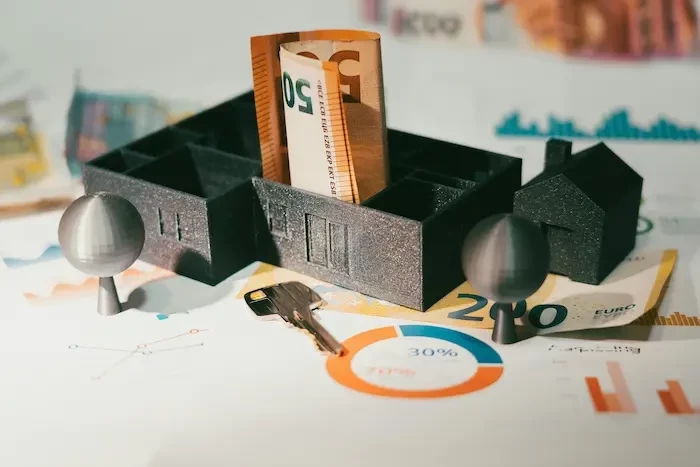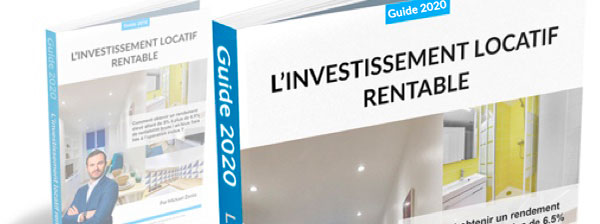SCI loan over 25 years: what are the rates and conditions in 2025?

The 25-year SCI loan is a solution that will contribute to the success of your real estate project. In the current context in France, interest rates for real estate loans range between 3.5% and 4.5%. This type of financing provides the opportunity to pool the borrowing capacity of the partners.
By integrating several borrowers, the SCI or Société Civile Immobilière can obtain larger financings, often necessary for ambitious rental investments. The partners will also be able to share the costs. This will lighten the financial burden for each and will promote better management of the common cash flow.
Conditions for obtaining a 25-year loan in SCI
Eligibility criteria and general conditions
From the outset, the conditions are no different from those of a traditional property loan. The bank will mainly examine the repayment capacity of the SCI. It will take into account:
-
income of partners,
-
of the viability of the real estate project,
-
the debt ratio (which must not exceed 35% of the partners' overall income),
-
personal contribution (generally required at a rate of 10 to 20% of the price of the property).
The partners may have to provide guarantees such as a mortgage or bank guarantee to secure the loan.
Steps to Applying for a Loan
|
Stage |
Description |
|
Signing of the sales agreement |
This first step commits the parties to conclude the transaction under certain conditions in order to obtain financing. |
|
Loan search |
Partners can seek the loan on their own or use a real estate broker.
He will negotiate advantageous conditions thanks to his banking network and his knowledge of the acceptance criteria. |
|
Gather the necessary documents |
The bank requires supporting documents such as: - account statements, - proof of income, - the sales agreement, - information on the SCI (statutes, shareholders’ agreement, etc.). |
|
Bank's agreement in principle |
If the file meets the criteria, the bank issues an agreement in principle.
It will confirm its interest in financing the project subject to in-depth analysis. |
|
Opening an account at the lending bank |
The bank requires the opening of a dedicated account for the SCI, used to manage:
|
|
Issuance of the official loan offer |
The bank issues an official offer which the partners receive by mail.
An 11-day reflection period is provided to analyze the loan conditions. |
|
Acceptance of the offer and signing of the deed of sale at the notary |
After acceptance of the offer, the final signing of the deed of sale at the notary's office formalizes the purchase of the property. |
|
Start of reimbursement |
Once the deed is signed, repayment of the loan begins in accordance with the terms of the schedule defined in the contract. |
The advantages and disadvantages of a 25-year SCI loan
Benefits
Increased chances of getting a loan
The pooling of the financial capacities of the partners makes the file more solid and increases the borrowing capacity of the SCI . It allows access to higher amounts than a single individual. This will open the way to ambitious projects, especially in rental investment.
Investing without changing the distribution of share capital
Each partner retains his shares without changing the distribution of capital, even in the event of bank financing. This facilitates the management of the interests of each partner without affecting the percentage of ownership.
Devaluation of shares for family transfers
During family transfers , the SCI can optimize taxes by devaluing the shares, taking into account the remaining debt. Gift taxes can be reduced and more value can be transferred with a lower tax impact.
Disadvantages
Mandatory agreement of all partners
Obtaining a loan requires the approval of all partners, but this can lead to disagreements. The project could be slowed down or blocked, in the event of strategic divergences.
Unlimited liability of partners
The partners are liable for the debts of the SCI up to the amount of their shares , which can represent a risk in the event of repayment difficulties.
Borrower insurance often required
Banks often require borrower insurance, the cost of which depends on the profiles of the partners. It can lead to additional costs if certain partners have risk profiles.
25-year SCI loan vs. personal loan: what to choose?
Choosing between a 25-year SCI loan and a personal loan to finance a real estate investment depends on several criteria.
While a personal loan allows an individual to finance a project in their name, a SCI loan offers a collective approach. Its specific characteristics can be particularly advantageous for certain real estate projects, such as rental investments.
Les SCI n’ont pas accès aux prêts aidés comme le Prêt à Taux Zéro (PTZ) ou le Prêt Action Logement, réservés aux particuliers pour l’achat d’une résidence principale. Ces aides peuvent réduire les coûts, mais pour les projets locatifs, les associés peuvent envisager un prêt personnel pour bénéficier de ces dispositifs.
Borrowing rate for a 25-year SCI loan
In 2025, the borrowing rates for SCIs are similar to those offered to individuals for traditional real estate loans. Currently, the average rates for a 25-year real estate loan are between 3.5% and 4%. However, these figures may vary depending on:
-
of the borrower's profile,
-
of the guarantees offered,
-
of the commercial policy of banks
-
interest rates
Interest rates in 2025 continue to follow a rise seen in recent years. The main reason is the monetary policy of the European Central Bank (ECB), which has increased its key rates to contain inflation. This economic context has a direct impact on the borrowing conditions of SCIs (rates are similar to those of individuals, but are adjusted according to the strength of the SCI's file).
Factors influencing rates
Economic situation and ECB monetary policy
The European Central Bank (ECB) adjusts its key rates according to the European economy. An increase in these rates increases the cost of financing for banks, which pass it on to borrowers. In times of fighting inflation, such as in 2025, the rates applied to SCI loans increase, thus reducing the profitability of rental investments.
SCI profile
Banks analyze:
-
financial capacity
-
the stability of the partners’ income,
-
the solidity of the real estate project,
-
the guarantees provided (such as contributions or assets as collateral).
An SCI made up of partners with stable income and a rental property project in a dynamic area generally obtains more favorable borrowing conditions.
Bank choice
Each bank has its own policy for SCI loans. Some, specialized in real estate financing, offer more attractive rates for well-structured projects. Others, less experienced, apply higher rates to compensate for the perceived risk.
Comparison of fixed and variable rates
|
Rate Type |
Features |
Benefits |
Disadvantages |
|
Fixed rate |
The rate remains the same throughout the duration of the loan.
It guarantees the stability of monthly payments. |
Stable monthly payments, facilitating budget planning.
Example: for a loan of €300,000 over 25 years with a fixed rate of 3.8%, the monthly payments would amount to approximately €1,560. |
May be less advantageous if interest rates fall.
In a context of initially lower rates, the total cost of the loan may be higher than that of a variable rate if rates do not rise. |
|
Variable rate |
The rate is revised annually based on the Euribor index, which causes the monthly payments to fluctuate. |
Initially, the rate is often lower than a fixed-rate loan, offering lower monthly payments.
Example: for a loan of €300,000 at an initial rate of 3%, the monthly payments are €1,420. |
The amount of monthly payments may increase if interest rates increase.
For example, a 1% increase in the rate would result in monthly payments of around €1,550, increasing the total cost of the loan over the long term. |
Borrowing without a contribution to a SCI: is it possible?
Borrowing without a contribution in SCI is an option that may interest many investors, especially those who wish to increase the leverage for a rental investment. Although banks are traditionally reluctant to 100% finance a real estate project without a personal contribution, it is possible to obtain it under certain conditions. SCI projects will have to be well structured.
SCI loan without contribution for a rental investment
For a rental investment, borrowing without a deposit is possible if the SCI presents a solid project with a rental yield sufficient to cover the monthly loan payments. Banks mainly examine the potential profitability of the property as well as the ability of the SCI to generate stable rental income.
A detailed business plan is essential in this case: it must prove that the rents collected will be able to cover, or even exceed, the monthly charges (loan, insurance, maintenance).
An attractive location and a realistic estimate of rental demand will also be required.
Brokerage tips to facilitate a loan without a deposit
Recourir aux services d’un courtier est fortement recommandé pour un prêt SCI sans apport. Ils connaissent bien le marché bancaire et savent quels établissements sont les plus susceptibles de financer ce type de projet.
Thanks to their network of banking partners and their expertise, they can present the file in a way that optimizes its chances of acceptance. It will highlight:
-
the expected rental profitability,
-
the seriousness of the management of the SCI,
-
possible guarantees.
The broker will also be able to negotiate advantageous borrowing conditions for the SCI, especially in terms of rates and administration fees (even without a contribution).
Fees and guarantees
When partners borrow for an SCI over a period of 25 years, several fees and guarantees are added to the cost of the loan. Even if they are perceived as secondary, they represent a significant part of the overall financing. As a result, they can impact the total cost of the investment.
|
Category |
Description |
Example of cost for a loan of €200,000 |
|
Application fees |
Costs related to the study and setting up of the loan, covering the verification of solvency and the establishment of the loan offer.
Typically around 1% of the amount borrowed. |
Around €2,000 |
|
Guarantees |
The bank requires collateral such as a mortgage or bank guarantee to secure the loan.
The mortgage incurs fees of around 1 to 2% of the loan amount, while the bank guarantee is sometimes less expensive. |
Mortgage: €4,000 or deposit (varies by organization) |
|
Borrower insurance |
Although often required by banks, it varies depending on the borrowers' profile (age, health, etc.).
On average, it represents between 0.3% and 0.5% of the capital borrowed per year.
It protects against death or disability, it increases the overall cost. |
Between €15,000 and €25,000 over 25 years |
|
Overall impact of fees |
Integrating calculation:
|
Estimated total cost: approximately €344,000 |
Taxation and financial benefits
By creating an SCI for your real estate project, you will be able to benefit from several advantageous tax measures. Especially with regard to the deduction of loan interest and the depreciation of assets. The choice of the SCI's tax regime (Income Tax, IR, or Corporate Tax, IS) also greatly influences the savings that can be made and the management of costs in the long term.
Deduction of loan interest for an SCI from IR
With an SCI subject to Income Tax (IR) , the partners can deduct loan interest from rental income. This will reduce the taxable amount.
For a loan of €300,000 at 3% over 25 years, this deduction can represent around €8,000 per year at the start of the period. This significantly reduces taxation if the rental yield is high.
Depreciation and deduction of borrowing costs for an SCI subject to IS
By choosing Corporate Tax (IS), the SCI will be able to depreciate the real estate. A portion of its value will be deducted each year and will reduce taxable profits.
For a property worth €300,000, depreciation could reach €6,000 per year over 50 years. Combined with borrowing costs, the taxable net profit will fall sharply.
Simulation for a SCI loan of €300,000 over 25 years
|
Tax system |
Deduction details |
Taxable income after deduction |
Tax rate |
Amount of tax |
|
SCI at IR |
Deductible interest of €8,000 |
10 000 € |
According to the marginal rate of the partners |
Variable depending on the rate |
|
SCI at IS |
Depreciation of €6,000 + interest of €8,000 |
4 000 € |
15 % |
600 € |
Complete process for obtaining a 25-year loan in SCI
Here is a guide to the essential steps and points to consider to successfully complete this process.
Steps to obtaining a loan
|
Stage |
Description |
|
Preparation and constitution of the loan file |
Creation of a complete file including:
|
|
Search for a loan and request for agreement in principle |
Compare offers from several banks to get the best conditions.
The selected bank studies the file and can issue an agreement in principle if the project is deemed viable. |
|
Assessment of guarantees and insurance |
Review of guarantees such as mortgage or bank guarantee requested by the bank.
Borrower insurance may be required to cover partners in the event of an unforeseen event. |
|
Opening a bank account in the name of the SCI |
Obligation to open an account in the name of the SCI in the lending bank to manage the financial flows linked to the property (rent, repayment of monthly payments). |
|
Issuance of the loan offer and reflection period |
The bank issues the official loan offer.
A legal period of 11 days is imposed for the partners to think before accepting the offer. |
|
Signing of the deed of sale at the notary and start of repayment |
Signing of the deed of sale at the notary.
The loan is released and the funds transferred to the seller.
Repayment of monthly payments generally begins the following month. |
SCI loan over 25 years, a strategic choice for 2025
The 25-year SCI loan offers advantages such as pooling borrowing capacity and the possibility of financing large-scale projects. However, one must remain vigilant regarding shared responsibilities and requirements related to guarantees and borrower insurance.
Before committing, each investor must carefully assess their financial situation, their long-term objectives and the profitability potential of the real estate project. It is also recommended to consult a financial advisor specializing in SCI , to make a decision adapted to the specificities of the group of partners.
These articles may also be of interest to you
-

La garantie sur prêt immobilier joue un rôle clé en déterminant l’acceptation du dossier et les conditions du prêt. Elle influence le montant emprunté et le taux d’intérêt, selon sa solidité.
-

La cession de parts sociales nécessite une vérification minutieuse des statuts et des conditions de vente pour éviter les risques. Des clauses mal rédigées ou ignorées peuvent entraîner des conflits et des pertes financières.
-

En 2025, les taux d’intérêt pour un prêt immobilier se stabilisent, offrant plus de flexibilité aux emprunteurs. Cette baisse permet des mensualités plus accessibles et un budget immobilier mieux maîtrisé pour relancer vos projets.



